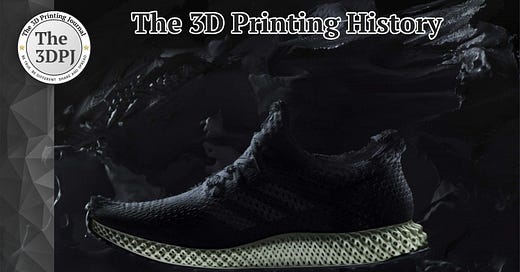04-07-2017: Adidas announced the use of Carbon 3D technology for producing the Futurecraft 4D collection
We entered the era of industrial-scale 3D printing when
On April 7, 2017, Adidas announced that it would utilize Carbon's ultra-fast 3D printing technology to manufacture the midsoles for its new line of shoes – Futurecraft 4D. The company stated its goal to produce 100,000 pairs of shoes by the end of 2018, creating a serial production system with Carbon SpeedCell. It was the first high-profile use of additive manufacturing technology for mass production of a consumer-facing, functional application.
Back in December 2016, Adidas launched its first 3D-printed shoe – the Runner 3D. The consumer response was so encouraging that the company decided to create so-called “Speed Factories,” where it would produce its products using new technologies – including 3D printing. Carbon’s method was one of the few available on the market that met the requirements for production speed, quality, and physical properties.
The CLIP technology not only allowed for printing parts 25 to 100 times faster than traditional methods, but also provided a uniform structure visually comparable to injection-molded objects. Moreover, it enabled the creation of parts with isotropic strength – equally strong in all directions. Adidas believed that CLIP would allow it to produce midsoles for its shoes on a truly mass scale.
What made the Futurecraft 4D collection stand out was how it was created. In designing the shoes, Adidas employed tools like motion capture and 3D foot scanning, building a data library on runners’ movement and physiology. This allowed the company to define different “functional zones” within the sole, closely related to cushioning and stability. The lattice structure of the sole could only be made using additive manufacturing technologies.
For this project, Carbon developed a special material – a combination of UV-curable resin and polyurethane. This material was proprietary to Adidas and used exclusively in its shoe production. The time required to print a single midsole was about 90 minutes.
Adidas’ commitment to the project was evident from its production plans. In April, the first batch of 300 shoes was released. By the end of 2017, a second batch of 5,000 pairs was expected, and by the end of 2018, over 100,000 pairs were planned to be sold. At the same time, both companies deepened their collaboration to further develop the CLIP technology specifically for sports gear and apparel, aiming to accelerate the printing process even further and introduce new materials.
All in all, this was a breakthrough moment for the development of additive manufacturing – a true milestone in practical application. Today, 3D-printed midsoles are no longer unusual, and most of the world’s major footwear brands are utilizing this technology. Even entire shoes are now fully 3D-printed using FFF technology with flexible foam-like materials.
Source: www.fastcompany.com






